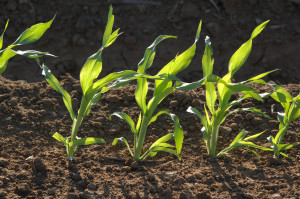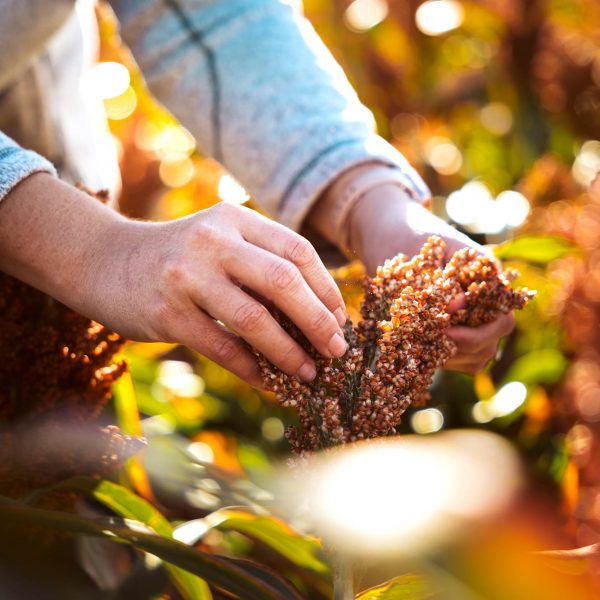
Sorghum Weed Control
Sorghum Weed Control
Brent Bean, Sorghum Checkoff Director of Agronomy
Weed control in sorghum must start with an effective preemergence weed control program. Weed scientists constantly stress the importance of using at least two herbicides from different mode-of-action groups. In sorghum, there are seven primary active ingredients for preemergence weed control, which fall into four mode-of-action categories:
- PS II inhibitor (Group 5): Atrazine
- Fatty Acid inhibitor (Group 15): S-metolachlor, Metolachlor, Acetochlor, Dimethenamid
- HPPD inhibitor (Group 27): Mesotrione
- PPO inhibitor (Group 14): Saflufenacil
A common and popular mix is atrazine combined with a Group 15 herbicide. Premixes like Bicep II Magnum® (atrazine + s-metolachlor) and Fultime® NXT (atrazine + acetochlor) are commonly used. Fultime® NXT has a lower atrazine concentration at a 1X rate, making it a suitable option for those looking to reduce atrazine usage. Mesotrione has gained popularity in recent years and is often used in a two- or three-way mix with atrazine and/or s-metolachlor. It provides consistent broadleaf weed control, especially for Palmer amaranth, but cannot be used on sandy soils due to the risk of crop injury.

A popular non-atrazine option is Verdict® (saflufenacil and dimethenamid) with added Outlook® (dimethenamid) for extended residual activity and enhanced grass control. This product is particularly well suited for sandy soils.
Postemergence Weed Control in Sorghum
For controlling weeds that may emerge despite the use of a preemergence program, there are a number of active ingredients to choose from for broadleaf weed control. Key products are briefly discussed below:
Atrazine can be applied post-emergence and is effective on small emerged broadleaf weeds while also providing preemergence activity. Although soil restrictions may prevent preemergence use of atrazine in sandy, high pH or low organic matter soils due to the potential for crop injury, these restrictions do not apply to postemergence applications. Growers should check for any crop rotation restrictions that might apply.
Dicamba (Clarity®, Rifle®, others) or 2,4-D are effective treatments on most broadleaf weeds. To reduce the risk of crop injury and yield reduction, Dicamba or 2,4-D should be applied after all sorghum has emerged but before it exceeds 8 to 10 inches in height. The addition of surfactants and other adjuvants is not recommended, as these tend to increase crop injury. Weeds less than 4 inches tall are much easier to control than larger weeds. Consider applying dicamba or 2,4-D at reduced rates, but in combination with other products, especially atrazine or Peak®.
Fluroxypyr (Starane Ultra®, StareDown®, others) is safer to use on sorghum than Clarity® and 2,4-D and has good activity on kochia, morning glory species and a few other broadleaf weeds. Unfortunately, its activity on pigweed species is limited. It is often used in combination with other herbicides.
Huskie® FX contains pyrasulfotole, bromoxynil and fluroxypyr and should only be used in areas free from HPPD-resistant weeds. Although most effective on small weeds, Huskie® FX can be used as a rescue treatment on larger weeds if necessary. It can be applied to sorghum plants up to 30 inches tall or before flag leaf emergence. The addition of a low rate of atrazine plus an adjuvant provides the best control. Temporary sorghum leaf spotting and yellowing will likely occur but sorghum will typically rebound from these injury symptoms within a few days.
Prosulfuron (Peak®) is very safe on sorghum plants up to 30 inches tall. However, it is not as effective on larger broadleaf weeds and should not be used where ALS-resistant weeds are present. Prusulfuron is typically most effective when applied at a reduced rate with a mix of dicamba or atrazine. In many regions, there is an 18-month crop rotation restriction to cotton or soybeans.
Halosufuron-methyl (Permit®, Sandea®) is a good choice for fields infested with nutsedge and is also effective on cocklebur, sunflower and a few other broadleaf weeds, but not effective against pigweed. Yukon® combines halosufuron-methyl with dicamba and is a good premix to consider.
Metsulfuron (Ally® XP) must be used with a low rate of 2,4-D. It is often mixed with a little atrazine.
Carfentrazone (Aim®) is a burndown product that is occasionally used mixed with other herbicides. By itself, it will only be effective on very small weeds.
Quinclorac (Facet®, Quinstar®) is primarily used where bindweed is a problem in sorghum, although it has reasonably good activity on small annual grass.
FirstAct®, ImiFlex® and Zest® are products used in herbicide tolerant sorghum hybrids with the Double TeamTM, igrowth® and InzenTM traits, respectively, and are used for grass control. Visit the companies or the Sorghum Checkoff website for more information on their use.
Although weed control is becoming more challenging, good results can be achieved in sorghum by using a solid preemergence program, followed by an appropriate and timely post emergence treatment when needed.
As always, check labels for use of specific products in your fields.




